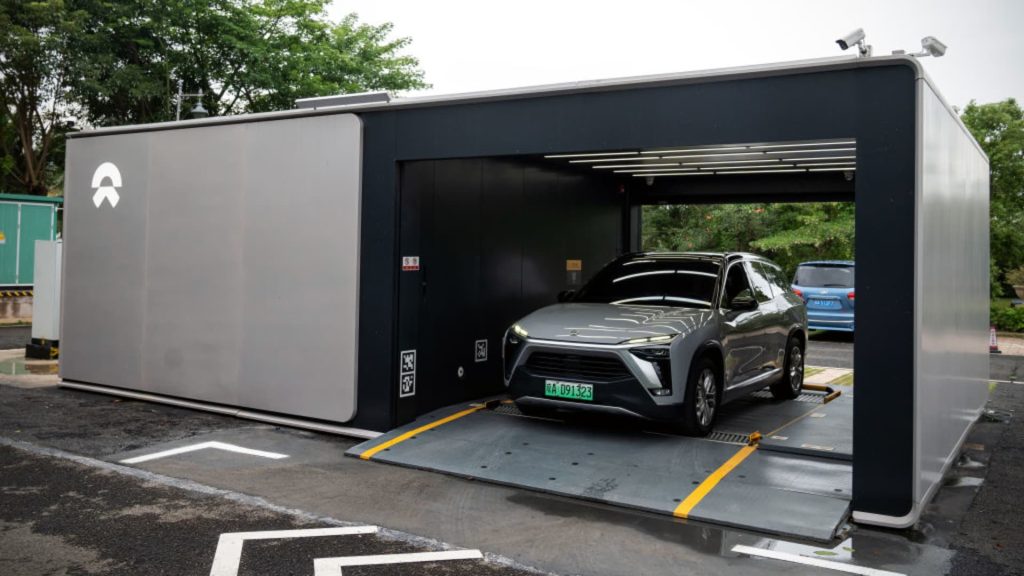Chinese electric car company Nio has been focusing on expanding its battery swap partnerships to gain an advantage in the EV infrastructure sector. By partnering with four Chinese automakers – Changan, Geely, Chery, and JAC – and two local battery companies, Nio aims to address consumer concerns about driving range. While battery charging stations are common, Nio believes that battery swapping is a quicker method and has completed 40 million battery swaps compared to 37 million charges at public stations. The company plans to continue expanding its battery swap network to provide a better user experience and boost vehicle sales.
Despite Nio’s efforts, battery swapping is not yet mainstream due to the need for standardized car batteries. While charging stations resemble gas stations, battery swap technology is housed in a shed-like structure where machines automatically exchange depleted batteries for pre-charged ones. Nio’s goal is to serve its users and provide a convenient charging and swapping experience, helping to sell more cars. By enabling drivers to get a fresh charge in just three minutes through battery swapping, Nio believes it can keep up with advancements in battery technology. Power services and other products currently account for about 10% of Nio’s total revenue.
The concept of battery swapping has had mixed success in the industry, with Tesla and other startups attempting it in the past. While some ventures failed, startups like Ample are exploring battery swap stations in the U.S. and expanding overseas. The key to making battery swapping viable is to have a large pool of vehicles using the service to offset the massive battery inventory investment required. Nio’s partnership with the Chinese government encourages others to join forces on swapping, which could create the necessary scale to make swapping economically feasible.
Nio is the first major electric car company to introduce battery swap stations in addition to charging stations in mainland China and Europe. The company has over 2,300 battery swap stations and plans to add 1,000 more this year. CEO William Li noted that only a fraction of battery swap stations are currently processing enough orders to break even, while Nio’s charging stations reached profitability last year. Building battery swap stations can be costlier than charging stations, but businesses prefer charging stations due to higher returns. However, challenges such as power grid limitations may arise if businesses install faster-charging stations.
The surge in electric vehicle development aimed at reducing carbon emissions leads to concerns about battery waste. Nio is committed to addressing sustainability concerns by partnering with battery giant Contemporary Amperex Technology to develop longer-lasting batteries. By using battery swap technology and big data, Nio claims it can retain 80% of a battery’s capacity after 12 years of use. As the number of new energy vehicles grows, nearly 20 million batteries are expected to reach the end of their warranty period between 2025 and 2032. Nio’s collaboration with CATL aims to create batteries with extended lifespans to minimize waste and ensure a more sustainable future.















